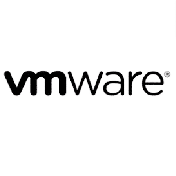Seminarinhalt
Nach Abschluss des Seminars haben die Teilnehmer*innen Kenntnisse zu folgenden Themen:
- Verwalten der Cisco Email Security Appliance (ESA)
- Absender- und Empfängerdomänen kontrollieren
- Spam-Kontrolle mit Talos SenderBase und Anti-Spam
- Antiviren- und Ausbruchsfilter verwenden
- Mail-Richtlinien verwenden
- Inhaltsfilter verwenden
- Verwendung von Nachrichtenfiltern zur Durchsetzung von E-Mail-Richtlinien
- Datenverlust verhindern
- Ausführen von LDAP-Abfragen
- Authentifizierung von SMTP-Sitzungen (Simple Mail Transfer Protocol)
- E-Mail authentifizieren
- E-Mail verschlüsseln
- Verwendung von Systemquarantänen und Bereitstellungsmethoden
- Zentralisierte Verwaltung mit Clustern durchführen
- Test und Fehlerbehebung
Programm
- Cisco Email Security Appliance Overview
- Technology Use Case
- Cisco Email Security Appliance Data Sheet
- SMTP Overview
- Email Pipeline Overview
- Installation Scenarios
- Initial Cisco Email Security Appliance Configuration
- Centralizing Services on a Cisco Content Security Management Appliance (SMA)
- Release Notes for AsyncOS 11.x
Administering the Cisco Email Security Appliance
- Distributing Administrative Tasks
- System Administration
- Managing and Monitoring Using the Command Line Interface (CLI)
- Other Tasks in the GUI
- Advanced Network Configuration
- Using Email Security Monitor
- Tracking Messages
- Logging
Controlling Sender and Recipient Domains
- Public and Private Listeners
- Configuring the Gateway to Receive Email
- Host Access Table Overview
- Recipient Access Table Overview
- Configuring Routing and Delivery Features
Controlling Spam with Talos SenderBase and Anti-Spam
- SenderBase Overview
- Anti-Spam
- Managing Graymail
- Protecting Against Malicious or Undesirable URLs
- File Reputation Filtering and File Analysis
- Bounce Verification
Using Anti-Virus and Outbreak Filters
- Anti-Virus Scanning Overview
- Sophos Anti-Virus Filtering
- McAfee Anti-Virus Filtering
- Configuring the Appliance to Scan for Viruses
- Outbreak Filters
- How the Outbreak Filters Feature Works
- Managing Outbreak Filters
Using Mail Policies
- Email Security Manager Overview
- Mail Policies Overview
- Handling Incoming and Outgoing Messages Differently
- Matching Users to a Mail Policy
- Message Splintering
- Configuring Mail Policies
Using Content Filters
- Content Filters Overview
- Content Filter Conditions
- Content Filter Actions
- Filter Messages Based on Content
- Text Resources Overview
- Using and Testing the Content Dictionaries Filter Rules
- Understanding Text Resources
- Text Resource Management
- Using Text Resources
Using Message Filters to Enforce Email Policies
- Message Filters Overview
- Components of a Message Filter
- Message Filter Processing
- Message Filter Rules
- Message Filter Actions
- Attachment Scanning
- Examples of Attachment Scanning Message Filters
- Using the CLI to Manage Message Filters
- Message Filter Examples
- Configuring Scan Behavior
Preventing Data Loss
- Overview of the Data Loss Prevention (DLP) Scanning Process
- Setting Up Data Loss Prevention
- Policies for Data Loss Prevention
- Message Actions
- Updating the DLP Engine and Content Matching Classifiers
Using LDAP
- Overview of LDAP
- Working with LDAP
- Using LDAP Queries
- Authenticating End-Users of the Spam Quarantine
- Configuring External LDAP Authentication for Users
- Testing Servers and Queries
- Using LDAP for Directory Harvest Attack Prevention
- Spam Quarantine Alias Consolidation Queries
- Validating Recipients Using an SMTP Server
SMTP Session Authentication
- Configuring AsyncOS for SMTP Authentication
- Authenticating SMTP Sessions Using Client Certificates
- Checking the Validity of a Client Certificate
- Authenticating User Using LDAP Directory
- Authenticating SMTP Connection Over Transport Layer Security (TLS) Using a Client Certificate
- Establishing a TLS Connection from the Appliance
- Updating a List of Revoked Certificates
Email Authentication
- Email Authentication Overview
- Configuring DomainKeys and DomainKeys Identified Mail (DKIM) Signing
- Verifying Incoming Messages Using DKIM
- Overview of Sender Policy Framework (SPF) and SIDF Verification
- Domain-based Message Authentication Reporting and Conformance (DMARC) Verification
- Forged Email Detection
Email Encryption
- Overview of Cisco Email Encryption
- Encrypting Messages
- Determining Which Messages to Encrypt
- Inserting Encryption Headers into Messages
- Encrypting Communication with Other Message Transfer Agents (MTAs)
- Working with Certificates
- Managing Lists of Certificate Authorities
- Enabling TLS on a Listener’s Host Access Table (HAT)
- Enabling TLS and Certificate Verification on Delivery
- Secure/Multipurpose Internet Mail Extensions (S/MIME) Security Services
Using System Quarantines and Delivery Methods
- Describing Quarantines
- Spam Quarantine
- Setting Up the Centralized Spam Quarantine
- Using Safelists and Blocklists to Control Email Delivery Based on Sender
- Configuring Spam Management Features for End Users
- Managing Messages in the Spam Quarantine
- Policy, Virus, and Outbreak Quarantines
- Managing Policy, Virus, and Outbreak Quarantines
- Working with Messages in Policy, Virus, or Outbreak Quarantines
- Delivery Methods
Centralized Management Using Clusters
- Overview of Centralized Management Using Clusters
- Cluster Organization
- Creating and Joining a Cluster
- Managing Clusters
- Cluster Communication
- Loading a Configuration in Clustered Appliances
- Best Practices
Testing and Troubleshooting
- Debugging Mail Flow Using Test Messages: Trace
- Using the Listener to Test the Appliance
- Troubleshooting the Network
- Troubleshooting the Listener
- Troubleshooting Email Delivery
- Troubleshooting Performance
- Web Interface Appearance and Rendering Issues
- Responding to Alerts
- Troubleshooting Hardware Issues
- Working with Technical Support
References
- Model Specifications for Large Enterprises
- Model Specifications for Midsize Enterprises and Small-to-Midsize Enterprises or Branch Offices
- Cisco Email Security Appliance Model Specifications for Virtual Appliances
- Packages and Licenses
Lab outline
- Verify and Test Cisco ESA Configuration
- Perform Basic Administration
- Advanced Malware in Attachments (Macro Detection)
- Protect Against Malicious or Undesirable URLs Beneath Shortened URLs
- Protect Against Malicious or Undesirable URLs Inside Attachments
- Intelligently Handle Unscannable Messages
- Leverage AMP Cloud Intelligence Via Pre-Classification Enhancement
- Integrate Cisco ESA with AMP Console
- Prevent Threats with Anti-Virus Protection
- Applying Content and Outbreak Filters
- Configure Attachment Scanning
- Configure Outbound Data Loss Prevention
- Integrate Cisco ESA with LDAP and Enable the LDAP Accept Query
- Domain Keys Identified Mail (DKIM)
- Sender Policy Framework (SPF)
- Forged Email Detection
- Configure the Cisco SMA for Tracking and Reporting
Zielgruppen
- Security engineers
- Security administrators
- Security architects
- Operations engineers
- Network engineers
- Network administrators
- Network or security technicians
- Network managers
- System designers
- Cisco integrators and partners
Vorkenntnisse
- Cisco-Zertifizierung (Cisco CCENT®-Zertifizierung oder höher)
- Relevante Branchenzertifizierung wie (ISC) 2, CompTIA Security +, EC-Council, Global Information Assurance-Zertifizierung (GIAC) und ISACA
- Abschlussbestätigung der Cisco Networking Academy (CCNA® 1 und CCNA 2)
- Windows-Kenntnisse: Microsoft [Microsoft-Spezialist, Microsoft Certified Solutions Associate (MCSA), Microsoft Certified Systems Engineer (MCSE)], CompTIA (A +, Network +, Server +)
Die Kenntnisse und Fähigkeiten, die ein Teilnehmer*innen haben muss, bevor er an diesem Kurs teilnimmt, sind:
- TCP / IP-Dienste, einschließlich DNS (Domain Name System), SSH (Secure Shell), FTP, SNMP (Simple Network Management Protocol), HTTP und HTTPS
- Erfahrung mit IP-Routing




Alle nötigen Informationen!
Securing Email with Cisco Email Security Appliance
18.03.2016Alle nötigen Informationen!
— Erich L.